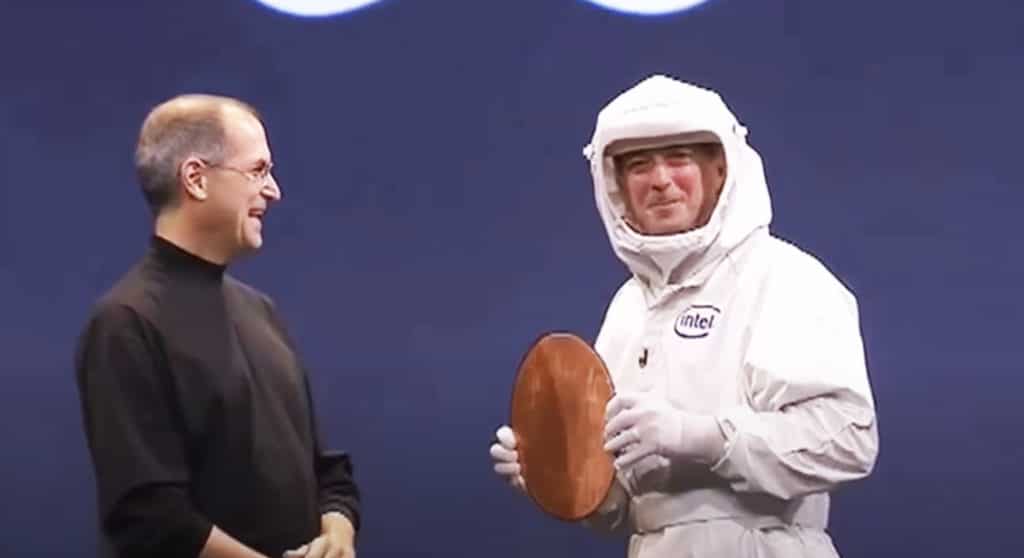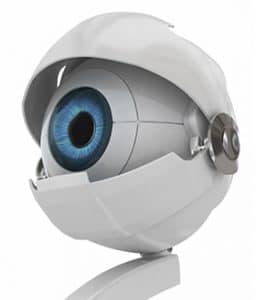Apple’s monolithic moment
All hail the M1 processor!
No question, Apple Silicon is a very big deal. But—it’s an even bigger deal in the context of Apple history. Monolithic even.
Cue the 2001: A Space Odyssey metaphor.
In the movie, an enigmatic Monolith is discovered beneath the surface of the moon. Planted by extraterrestrials eons ago, it’s actually a marker of human evolution. When exposed to the sun, it emits a signal to notify its makers that humankind is no longer bound to this earth.
The M1 chip is Apple’s very own Monolith. Exposed to the world, it sends a signal that Apple, after decades of evolution, has reached an epochal milestone.
To explain, a little archaeological dig is in order…
Building better brains
One of the darker moments of my advertising past is my work as Intel’s agency creative director.
However frustrating that experience was, I did learn an awful lot about processors—the brains inside our computers and devices.
The engineering skill and financial resources required to create a new generation of chips is almost hard to comprehend. As my clients put it, Intel spends more to design/manufacture a new family of processors than NASA spent to build the entire fleet of space shuttles.
Who knows if that’s really true. But we can safely say that creating these things has long been beyond the ability of mere mortals. Including the engineers of Apple.
That’s why Apple, going all the way back to the 70s, has built its products around processors supplied by others. First MOS Technology, then Motorola, then a partnership of Motorola and IBM, and finally Intel.
Apple Silicon represents something entirely new. It’s built specifically to integrate with Apple products. More important, it enables Apple to actualize its vision for future products on its own terms.
If you can’t beat ’em…
Prior to the Intel transition in 2005, Apple fought a never-ending battle against public perception.
Simply put, people believed PCs were faster. They dominated the landscape, screaming “high performance” with every new generation of Intel processors and were buoyed by Intel’s ubiquitous marketing. Despite improvements to the PowerPC processor then used by Apple, Macs seemed to be on the outside looking in. Sales reflected that.
Joining forces with Intel, the company Apple had demonized, would bring obvious technology advances—but it would also allow Apple to make a HUGE leap in marketing.
The new partnership leveled the playing field overnight. No more struggling to convince people that Apple could play with the Big Boys. Instead of being distracted by a perennial performance battle that was largely un-winnable, Apple could focus instead on marketing the Mac’s superiority in design, quality and simplicity.
Powered by Intel, Macs could go places they could never go before—like Intel itself.
Back when I worked with those guys, I was welcome inside the dark citadel, but my Mac laptop was not. Intel didn’t appreciate the “best tool for the job” argument.
A few years later, I was reunited with my former Intel clients, sitting alongside them at the Apple-Intel announcement event. They were like teenagers at their first rock concert.
They couldn’t wait to start using Macs themselves now that they were blessed by the Mother Ship. Across all industries, the door that had been open just a crack began to open wider.

However, the transition came with the inevitable “yeah, but…”
Apple would be forever dependent on Intel’s development timetables for faster, more power-efficient chips. And you know how much Steve Jobs liked being dependent on others, like Adobe for Flash and Google for Maps.
The greener pasture appeared when Apple moved to home-grown ARM silicon for iPhone and iPad. Evolving the Mac in the same direction became a question of when, not if.
The when is finally here. Having announced its intentions with M1, Apple finally controls its own processor destiny, Steve-style.
The guiding philosophy
We all know Steve had a passion for marketing quite rare in the corporate world. We also know he had an unbending rule about marketing: the Apple brand always comes first.
Both his passion and priorities were abundantly clear from the start of the Intel transition.
Just minutes after Steve stepped off the stage at the Intel announcement event, I jokingly said to him, “Please tell me you’re not putting an Intel Inside sticker on the Mac.” With a big grin, he replied, “No way—I made sure that was in the contract!”
As important as Intel processors were to Steve’s strategy, Intel could not overshadow the Apple brand.
Behind the scenes, this commandment played out in the box design for the first Intel-powered iMacs.
In place of the Intel Inside logo, Apple’s design team created a beautiful image of a processor bearing nothing more than the Intel name. Simple and elegant, it made the point without being gaudy. But where to put it?
The team presented several box designs to Steve. On one, this Intel chip image appeared on the front, right alongside the large iMac image. Steve killed it in a nanosecond.
He chose the design that relegated the Intel chip to “feature” status on the side of the box, amongst the list of iMac’s other selling points. Intel was just one ingredient in the mix.
Something else Steve refused: Intel’s money.
Every year, Intel contributes obscene amounts of marketing dollars to PC makers around the world. But it comes with a catch—all ads must display an Intel Inside logo at a specific size, with a specified amount of white space surrounding it. TV commercials must feature the logo for a specified length of time along with the annoying Intel “bong” at ad’s end.
Steve never gave a thought to joining that mob. Apple would forever be the hero of the new partnership, not Intel.
A deja-vu in reverse
I feel like I’ve seen this movie before—only this time, it goes in the opposite direction for the opposite reason.
In 2005, Apple moved to Intel to gain equality. In 2020, it’s moved away from Intel to gain superiority.
This superiority, however, could only come after years and years of evolution.
Apple needed to reach the highest level of engineering expertise. It needed to build a loyal, worldwide customer base. It needed the financial stability (and raw nerve) to make a radical fundamental change to a business that is already thriving.
It’s been a long and winding road for Apple—from lovable upstart in the 70s, to near-death in the 90s, to its rebirth with Steve Jobs 2.0, to seismic shifts with OS X and Intel, to its expansion from computer company to consumer electronics company.
Only after this long journey could Apple make the leap to a whole new family of processors “designed by Apple in California.”
By unveiling the M1 processor, Apple has exposed its Moon Monolith to the sun, marking a major inflection point in its existence. Hopefully, the extraterrestrials are pleased.


Thanks for your great story about Steve Jobs and “Intel inside.” It made me smile.
That was an awesome story 🙂